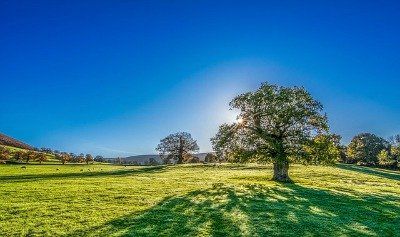It is difficult to give a clear and exacting statement on what is bonsai. I always have this predicament when confronted by this very question.
The uncertainty is compounded by the self-recognition that even after several years of actual practice, I myself am still a beginner who spends so much time analyzing, designing, and redesigning a potential tree that comes my way.
Nevertheless, I always do the explaining, retrieving my store of memory on the subject which has accumulated with time from various readings, conversations, seminars, exhibits, and hands-on experience.
The word bonsai comes from bon, meaning tray or pot, and sai, meaning tree. Literally, therefore, the word should mean potted tree.
However, there are more to it.
What Is Bonsai: An Art and Science
Bonsai is the art and science of dwarfing and shaping a tree or shrub and growing it as a healthy plant in a container or attached to some rock or stone, depicting a miniaturized replica of a real, old tree and natural scenery.
However, many masters, authors, and practitioners have expanded the coverage of bonsai.

Now bonsai includes plants with hard stems but not classified botanically as tree or shrub, as well as some grasses and herbaceous plants.
Notable examples are bamboo and palms.
Further, it may consist of a single tree, a pair, or a group of trees.
The process of creating a fine bonsai is complicated and involves the search for the appropriate planting material, propagation, planting and replanting, designing, pruning, training and retraining, refining, landscaping, and the culture of the tree.
First and foremost it is an art, its horticultural aspects are considered only secondary though necessary in the dwarfing process and prolonged culture of the tree.
In Japan where it was developed and popularized after it was introduced from China, there are living treasures of ancient masterpieces of bonsai trees which are reputedly 500 to 700 years old or more.
Note: The reference to China as the origin of bonsai is based on archaeological evidence.
What Is Bonsai: Religion and Philosophy
The art of bonsai is synonymous with antiquity. In ancient times it was restricted to a privileged few in China and Japan.
It has been associated with both religion and philosophy.
For the Buddhist monks who originally practiced the art in China during the Han dynasty (202 BC-AD 220), it was a way of establishing a link with God, the creator of the universe, and nature in all its forms.
To cultivate bonsai is, to some extent, to show an understanding of the concept of the creation of the world.
It also seems that bonsai plants were not originally produced from seed, cutting,s or layering.
A uniquely shaped plant would first have to be found in the mountains or forests.
The search for such a plant was endowed with the symbolic meaning of a “quest for the inner self” and a return to the origins of man.
It is a search for true perfection.
What Is Bonsai: Elements of Visual Art
Bonsai is now a recognized art with geographical and international competitions held periodically.
It has the same aesthetic elements consisting of composition, line, form, depth, proportion, balance, and so on as in painting, sculpture, and other forms of visual art.
The personality and style or signatures of different artists are recognizable to the discriminating.
It is considered a living sculpture and a dynamic art form. In the strict sense, no bonsai is ever finished.
Left without the care and attention which are demanded, the tree may either accelerate its growth, be transformed into another shape, or it may die.
Like any other art form, bonsai can be analyzed, taught, and learned.
In the beginning, I myself measured the trunk diameter, height, canopy diameter, and the vertical spacings of main branches of photographic specimens in books to learn about proportion.
What Is Bonsai: A Challenge
The usual limitations to what individuals can accomplish apply.
Great artists are born, not made. Artistic talent is a gift that cannot be assigned.
That rare ability of the “eye” to perceive what is uniquely and naturally beautiful as well as the dexterity of the hands in responding to the commands coming from the brain cannot simply be assumed by another individual.
This, however, should be considered a challenge rather than a deterrent.
The real pleasure in the practice of art lies in the search for beauty and excellence in harmony with nature.
Moreover, the skills demanded are not easily acquired.
It may take several years for one to produce a masterpiece bearing his own unique signature but the moment it is achieved, it will be worth all the time and effort expended.
The feeling of ecstasy should be like that of one who painstakingly perseveres step by step to climb a steep mountain and, finally against all odds, is able to put that last step that matters on top.
Conquerors just never quit.
What is bonsai? What else?
It’s conquering your fears, your insecurities, your uncertainties, your conceitedness, your loneliness. It’s conquering yourself!
Indeed it’s my constant companion, it’s my most willing listener.
It stretches my limbs, it calms me, and it gives me extreme satisfaction as I shape it according to my will without it raising any complaints.
It brings the mountains, forests, and a replica of nature into my urban dwelling.
And yet occasionally it pains me too as when tragedy befalls the tree.
It then tells me right on my face that I’m just a man.
That I ought to take a tight reign on my impatience and should better exercise due diligence and foresight.
